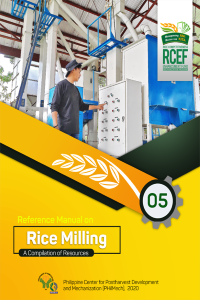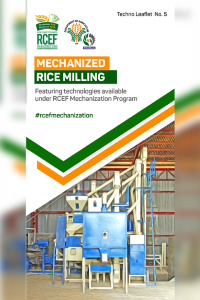
Rice milling is the process of removing hull, bran and brewer from the paddy, thereby producing an edible, white rice free from impurities. Rice milling in the Philippines is mainly undertaken by four types of mills, namely, (a) the “kiskisan” type, (b) the “cono” type, (c) the rubber roll type and (d) the impact type.
Consumer preference dominates the process by which rice is milled. The appeal of milled rice was brought about by the consciousness that whitened rice is more palatable to eat than unpolished rice. Empirically, the majority of domestic consumer prefer well-milled rice even that of regular milled rice. In the last decade, the preference is slowly changing with some niche market for brown rice and other specialty rice with minimal processing such as brown rice hulling.
Grain type and variety is just one of the factors affecting the milling recovery for milled rice. Long grains which are considered slender are more susceptible to breakage and contribute to the reduction of milling yield. Grains types that are considered soft and immature does not tolerate well the mechanical stress during milling, which reduces milled rice yield. The degree of milling is proportional with milling recovery. The bran layer comprises at least 10 to 12 percent of the paddy, with 4-degree milling classification.

Reference Manual #5
Mga impormasyon patungkol sa paggiling ng palay.

Techno Leaflet #5
Mga benipisyo at angkop na makinaryang ginagamit sa paggiling ng palay.